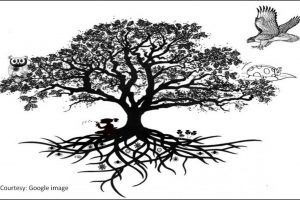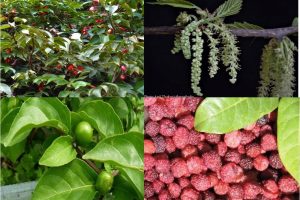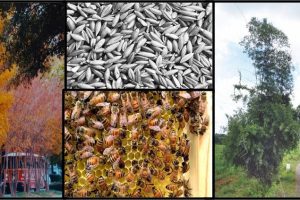EDITORIAL

Welcome to the third volume of the CEiBa newsletter.
The year 2020 started with a shocking surprise by Novel Coronavirus-2019 (COVID-19 / (SARS-CoV-2). The local infection from Wuhan city in China devastatingly swept the globe within three months raising the death toll nearly 45,000 and infected persons ~ 896,000 (WHO, 2nd April, 2020). COVID-19 outbreak wreaked havoc in the social-political and economic arena which has been felt at all levels from global to our home. At this time of hardship, when everybody is trying to cope with this unimaginable situation we offer you a new issue with freshly brewed articles, wild food info, and snippets. We anticipate our newsletter will be a close companion for your quality time, will enrich you about the facts hitherto less known or under-explored, and will hone our knowledge-base to handle unprecedented incidences in the future.
An article on functional diversity, i.e. varieties of functions occurring in the natural world appears first. The gradual shift of biodiversity research from species to function-centric queries mostly driven by researchers’ unwavering quest to understand the biodiversity-ecosystem function relationship. Given the ongoing global change in climate, land use and resource use, understanding the functional role of the ecosystem and its’ changing pattern under perturbations becomes inevitable. The article casts light on this aspect in simpler terms and drawing examples from the real world. Following the spirit, our second article tells about the ritualistic association of leafy greens with the Bengali society, a common practice of eastern India and Bangladesh. The authors nicely blend the cultural practices, historical perspectives, nutritional and medicinal aspects of leafy greens to highlight the importance of traditional practices in present-day lifestyle.
The wild food section describes the members of Meyna, Mimusops, Morus and Myrica distributed across India from the Himalayan mountains to the Southern Peninsula. Widely known for their medicinal and other uses, the dietary importance of these plants is yet to get a strong foothold in the mainstream Indian society.
Likewise, snippets provide glimpses of fall colour, beats from the bees, duck from Bombay and traditional rice from bamboo to unveil the fascinating realms of the natural world entangled with diverse culture.
We shall tide over the Corona phase in course of time; the world may come back to its usual rhythm but we should not forget the lessons learned from this disaster. I hope these lessons will help us to act wisely in the future.
Wish you all follow the safety rules to protect yourself from COVID-19 infection. It is time to be together and act responsibly to save the very basic foundation of humanity.
Happy reading.
RAJASRI RAY
ARTICLES
Biodiversity at work: a glimpse into the world of Functional Diversity
A visit to the museum mesmerizes us with a fascinating set of collections; the same happens when we are in the botanical or zoological garden or seaside aquariums where a plethora of biota flaunts a glimpse of diverse culture, life forms or functions. Considering its expansion and variation, biodiversity is also comparable with these places when we mention about statistics like “374,000 species of plants” (Christenhusz and Byng 2016), “8141 species of…
Bhoot Choturdoshi – An ancient Shaak eating ritual with ethnomedicinal importance
Today Radha, Jyotsna, Nandarani, Bimala are very busy. They are going out for a hunt as part of an ancient Bengali ritual, Bhoot Chaturdashi. It involves finding some specific edible greens which will drive the ghosts away. The ritual practices of Indian sub-continent are often underlined with ethnobotanical significance many of which yet remains to be unveiled. Bhoot Choturdoshi, celebrated on the day before Dipanwita Amabasya/Kali Puja can be addressed as Bengal’s…
WILD UNCULTIVATED EDIBLE PLANTS OF INDIA
WILD UNCULTIVATED EDIBLE PLANTS OF INDIA
Part 5 (…..after part 4) Meyna spinosa Roxb. ex Link Family – Rubiaceae It is a spiny small tree or a large shrub with greenish-white flowers found in the south and east Asian countries. In India, the plant is found in the northeastern states of Arunachal, Assam, Meghalaya and in West Bengal. Down the south, the plant is reported from Andhra Pradesh, Karnataka, and Tamil Nadu. It is called Moin Tenga in…
GLIMPSES OF NATURE AND CULTURE
Glimpses Of Nature And Culture
Bees and Beats Whether you flee from a stinging bee or are enamored by the sweet honey on your pancakes, there is no way that you can ignore a dancing bee! Bees are quite famous among ethologists for what is termed as a ‘waggle dance’. Nobel laureate Karl Von Frisch was among the first to interpret this rather peculiar behavior of bees. The worker bees perform this curious dance to convey the…




